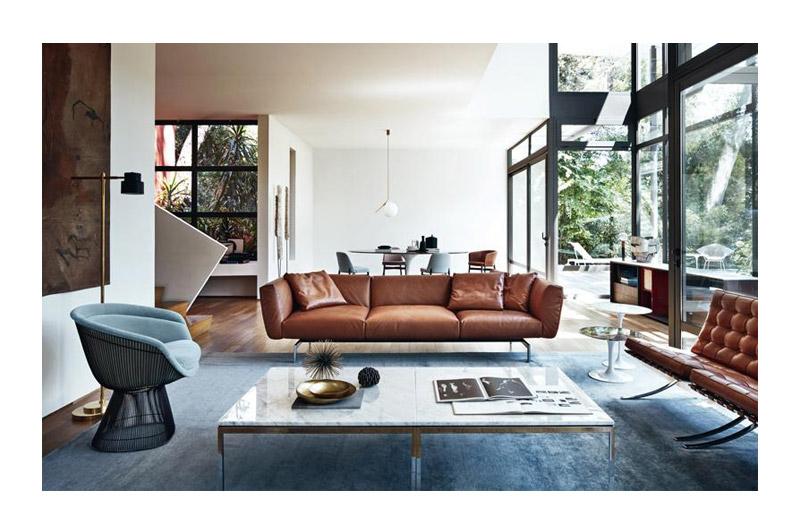
“I am not a decorator. The only place I decorate is my own house.” Florence Knoll Bassett
Leader in the mid-century modern design movement, Florence Knoll Bassett died Friday 25th of January 2019 at the age of 101.
From her childhood to her last days, she has always been involved in design.During her life she brought the modernism into her projects, working with some of the best designers as Eero Saarinen, Harry Bertoia, Isamu Noguchi and George Nakashima.
With her husband, Hans Knoll, they established showrooms around the world, from America to Europe, South America & Asia for over 20 years. From 1941, they worked as a pair: she was the creative designer and he was a salesman. Together, they achieved some successful arrangement projects as The Rockfeller Plaza in 1946 and the headquarters of Heinz in 1959.
She was working in an industry dominated by men and successfully imposed her sleek lined-designs and her business mind. Her designs became icons of office interiors of the post-war period. One of her best contribution at Knoll was “the open plan of work stations”. It offered people more flexibility and liberated secretaries from dark, interior office cells. 75 years after its introduction, Open Plan Workstations is the gold standard for the modern office.
Since her time, the company has evolved, but Florence Knoll Bassett will always be remembered as a sleek furniture designer, a perfectionist, a businesswoman & a pioneer of modernism.
“Ms. Knoll Bassett further distinguished herself during this period as an influential woman in a male-dominated industry.” Knoll Inc
It’s not overated to say that her work was totally ground-breaking. Nowadays, the modern design of offices appears as a major topic in companies. She represented modernity through mid-century designs.
“Knoll was one of the few furniture companies in the United States to showcase contemporary art alongside Modern furniture in its showrooms, creating visual dialogues between unique works of art and mass- produced designs, an affirmation of the company’s commitment to Modernism,” Paul Makovsky in Metropolis.
“Today the single most powerful figure in the field of modern design,” New York Times, 1964
“That revolution in the office took place 20 years ago and Florence Schust (Schu) Knoll, the woman who led it, is today the single most powerful figure in the field of modern design.” The writer continues: “To be accepted by Knoll is to have it made. And while Knoll has a committee to pass upon such submissions, it is Florence Knoll, as director of design, who makes the final decision.” New York Times, 1964







